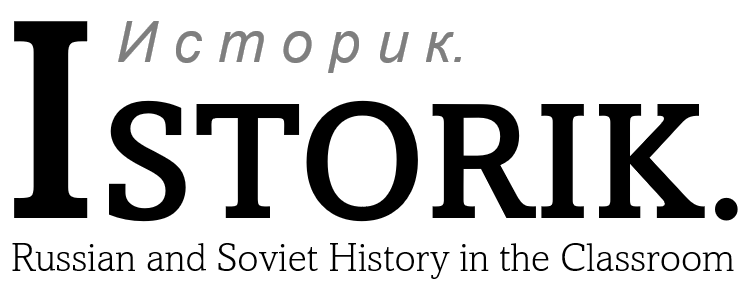A few years ago, Michael Fordham led an online project to quantify the substantive concepts students should know by the end of KS2 and KS3. The result was a list of several dozen recurring concepts, ranging from Absolute Monarchy to Working Class.
Fordham’s approach to substantive concepts, which he subsequently developed in a brilliant chapter in MasterClass in History Education: Transforming Teaching and Learning (eds. Counsell, Burn, and Chapman, 2016), focused on terms that describe recurring phenomena across and through periods of history. These, he argued, quoting Ashby and Lee, make up “the content of history, what history is ‘about’.”
Substantive
Concepts in Practice
Fordham’s
substantive concepts list has been hugely valuable to our curricular history
planning and teaching practice in our school and trust, flagging up the
vocabulary and their (often slippery and changeable) meanings that we want
students to pick up over time through our teaching of various topics. If
anything, however, we found the original list too restrictive and limited –
after a review involving myself and my wonderful colleague and now Trust
Director of History, Tommy-James Alexander, we decided the list had to be
significant expanded and become more flexible to encompass a greater
range of terms that would inevitably shift as our curriculum and its topics
developed.
Knowing
substantive concepts and their meaning(s) is essential to students’
understanding what we teach them and helps them make connections between
distinct periods of history. For example, if we want to teach students about peasants
(surely a key concept for teaching about almost any period of history since the
establishment of sedentary agriculture), they must be able to make connections
with farming, feudalism, power and authority, trade, and the economy. In other
words, they must know the meanings incapsulated within and expressed through
individual conceptual terms.
This project
is my attempt to begin to quantify the concepts students need an understanding
of to grasp Russian and Soviet History at KS5. It proceeds from a question that
has occupied me for some time: what language do our students need to be able to
tackle Russian and Soviet History?
The result is a detailed list of concepts (linked here), ranging from Abdicate/Abdication through to Zionist. This is free to download and browse at your leisure!
What it
is
It comprises a list of (in its original form) over 200 terms denoting particular phenomena, from individuals and groups to interactions, ideologies and beliefs, that recur throughout our KS5 Russia/USSR course, c. 1855-1964. This list is sub-divided by:
- vocabulary: tier 2 (multi-context, widely used terms) and tier 3 (specialised, contextually dependent terms)
- frequency: high (very commonly used through our course), medium (recurring, but less common), low (seen infrequently)
It includes
working (not dictionary!) definitions that could be used to explain the
concepts in abstract to students, as well as examples (not exhaustive!) of
their use in the context of our course.
It also
includes a list (again, not exhaustive!) of linked concepts, illustrating how
concepts may relate to one another.
This list of
substantive concepts is very much context-specific, in the sense that it is of
use to Russian and Soviet history but not necessarily applicable to other
historical contexts. However, for teachers of Russian and Soviet history, it
may provide a useful reference resource and starting point to thinking about
concepts.
What it
is not
This is not
a vocabulary list, dictionary, or thesaurus that can simply be handed to
students. It certainly isn’t intended as a knowledge organiser-type tool that
students are required to regularly revise from and receive retrieval tests on.
Instead, this is really a tool for teachers to ensure they are aware and
mindful of the conceptual vocabulary and its interconnections that needs to be
introduced and used in their teaching of our course in order to facilitate and
develop students’ understanding of its content.
It is also
not a static, or by any means complete, project. This is intended to be a
“living document” that can be added to, expanded, and developed as our teaching
develops. Inevitably, I will have overlooked some concepts in this first draft
and missed some valid connections, definitions, or examples that could be
included. If you use this, and spot anything missing that should be there (or
mistakes!) please let me know!
Notes on
terminology and language
Wherever
possible, I have used the most common English-language terms which students are
most likely to encounter not just in their lessons, but also outside of the
classroom, for these concepts. These include, for example, “socialist”,
“liberal”, “peasant”, and “Orthodox Christian”.
Some
English-language terms, however, only approximately express an idea from
original Russian terms. Where this is the case, the Russian term has been given
in italics and in brackets. For example, “commune” refers to the Russian term “mir”,
while “populist” refers to the Russian term “narodnik”.
Other terms
require clarification in lay language. Where this is the case, their lay
language form has been given in brackets after “=”. So “proletariat” is
clarified as (= working class), and “bourgeoisie” is clarified as (= middle
class). Where a particular connotation to a concept is intended, this is also
clarified, so there are two entries into “culture”: (everyday = byt) and
(high = the arts).
Finally,
some Russian-language terms without any widely accepted English-language
equivalent have been given in their Romanised transliterations in italics,
rather than attempting a translation. So “Kulak” is given for a
wealthier peasant, “Apparatchik” for a bureaucrat of the Soviet state
apparatus, and “Burzhui” for the revolutionary slang epithet aimed at
wealthy middle-class elites.
I hope this
is of use to you and your students, and would love to receive your thoughts and
comments on it!







No comments:
Post a Comment